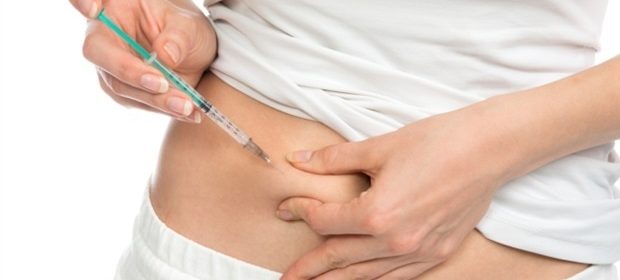What is Insulin Resistance?

Insulin resistance describes when the body produces insulin but the usual actions of insulin are not mediated.
Glucose is one of the most important sources of the body's energy and is obtained from the foods we ingest. Rice, potatoes, bread, milk, cereal, and fruit are all important sources of glucose and other sugars. Once ingested, glucose is absorbed from food into the bloodstream where it is carried into cells to provide energy for various cellular functions.
This cellular uptake of glucose is stimulated by insulin which is secreted from pancreatic beta cells. Insulin also stimulates the liver to convert excess glucose into glycogen for storage and suppresses the production of glucose.
Type 1 diabetes
In type 1 diabetes, no insulin is produced, meaning glucose is not taken up from the blood, leading to a high blood sugar level or hyperglycemia.
Type 2 diabetes
In type 2 diabetes, blood sugar levels are also raised, because an inadequate amount of insulin is produced to facilitate the cellular uptake of glucose by the body's cells. Alternatively, insulin levels may be sufficient, but the body cells fail to respond normally to the presence of insulin, even when levels are raised. This is called insulin resistance.
The resulting lack of glucose in cells triggers the pancreatic cells to produce more insulin still, resulting in raised blood levels of insulin or hyperinsulinemia.
In healthy individuals, the effects of insulin are mediated when it binds to insulin receptors present on various target cells such as the fat, muscle and liver cells. In the case of insulin resistance, however, the high level of blood insulin triggers a down regulation or a decrease in the amount of insulin receptors produced. This leads to a diminished cellular response to insulin, even when levels are raised.
Therefore, type 1 diabetes is caused by an actual deficiency in insulin while type 2 is caused by a relative deficiency.
As insulin resistance increases, the insulin-mediated effects on fat cells are reduced; the uptake of lipids circulating in the blood is decreased and the breakdown of stored triglycerides into free fatty acids is increased. Insulin resistance is therefore characterized by increased levels of triglyceride and other fats in the blood.
In the liver, insulin resistance reduces the conversion of glucose to glycogen for storage and the organ also fails to suppress glucose production. Furthermore, insulin resistance interrupts kidney function and can cause high blood pressure.
Together, these effects raise a person's risk for complications such as cardiovascular disease and stroke.
Sources
- http://www.nhs.uk/Conditions/Diabetes-type2/Pages/Introduction.aspx
- http://www.diabetes.co.uk/insulin-resistance.html
- professional.diabetes.org/…/05-Insulin-Resistance.pdf
- diabetes.niddk.nih.gov/…/insulinresistance_508.pdf
- www.aace.com/files/position-statements/aceirspositionstatement.pdf
- http://www.ias.ac.in/jbiosci/mar2007/405.pdf
Further Reading
- All Insulin Resistance Content
- Insulin Resistance Pathophysiology
- Causes of Insulin Resistance
- Insulin Resistance Treatment
- Insulin Resistance Diagnosis
Last Updated: Feb 26, 2019

Written by
Dr. Ananya Mandal
Dr. Ananya Mandal is a doctor by profession, lecturer by vocation and a medical writer by passion. She specialized in Clinical Pharmacology after her bachelor's (MBBS). For her, health communication is not just writing complicated reviews for professionals but making medical knowledge understandable and available to the general public as well.
Source: Read Full Article